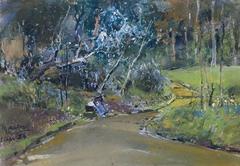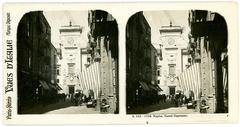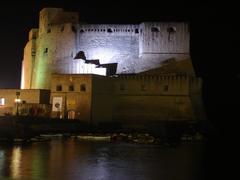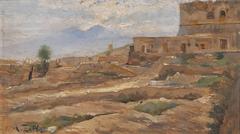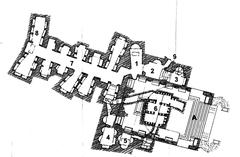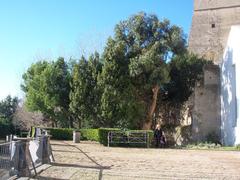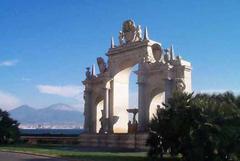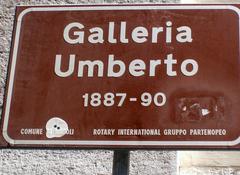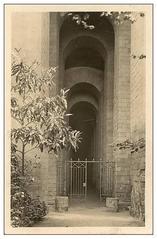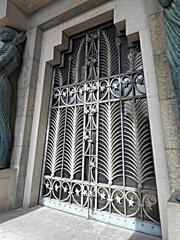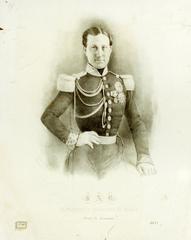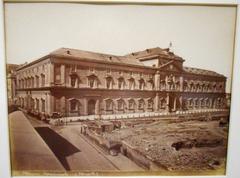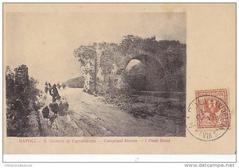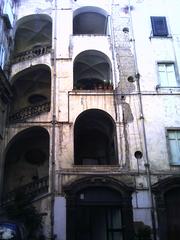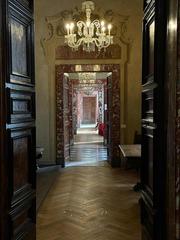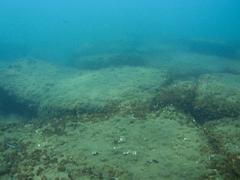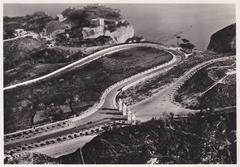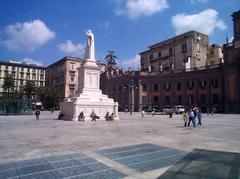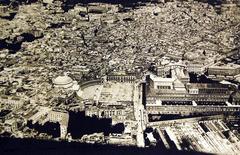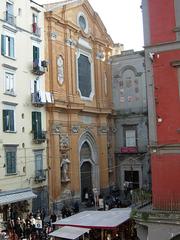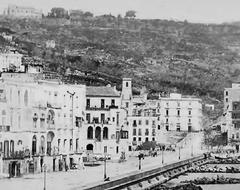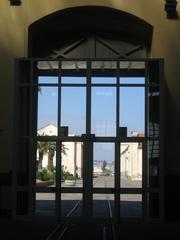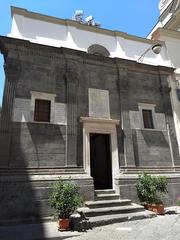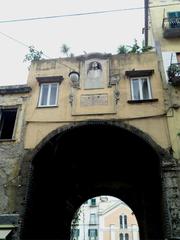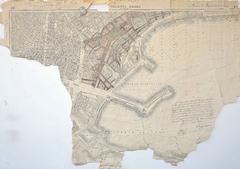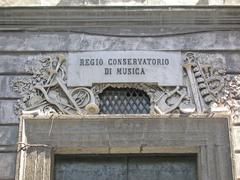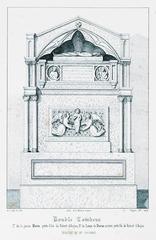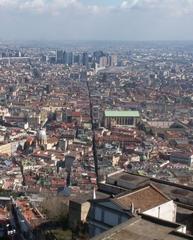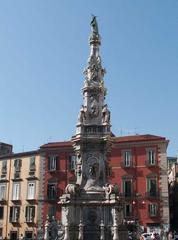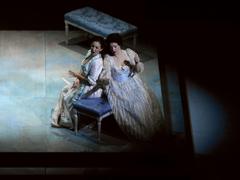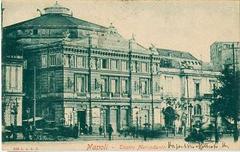
Filangieri Civic Museum Naples: Visiting Hours, Tickets, and Complete Visitor Guide
Date: 04/07/2025
Introduction
The Filangieri Civic Museum (Museo Civico Gaetano Filangieri) is an exceptional destination for art, history, and architecture lovers visiting Naples. Housed in the architecturally significant Palazzo Como—a rare Tuscan Renaissance landmark—this museum preserves centuries of Neapolitan culture through its diverse collections and atmospheric setting. Founded in 1888 by Prince Gaetano Filangieri, the museum’s history reflects the resilience and artistic heritage of Naples, surviving wartime devastation and undergoing meticulous restoration. Today, it stands as both a vibrant cultural hub and a testament to the city’s enduring commitment to preserving its treasures.
This guide covers the museum’s origins, highlights, visiting hours, ticket options, accessibility, travel tips, and must-see collections. For up-to-date information, consult the official website, Wikipedia, or Destination Naples.
Table of Contents
- History and Significance
- Collections & Highlights
- Visitor Information
- Planning Your Visit
- FAQs
- Conclusion and Recommendations
- References
History and Significance
Origins and Establishment
The Filangieri Civic Museum was established in 1888, rooted in the vision of Gaetano Filangieri, Prince of Satriano (1824–1892). Filangieri’s dream was to create a public museum that would house his extensive private collection of art, rare books, and applied arts within a building emblematic of Naples’ Renaissance legacy. He chose Palazzo Como (also known as Palazzo Cuomo), constructed between 1464 and 1490 by Florentine architect Giuliano da Maiano, renowned for its ashlar stone façade and distinct Tuscan Renaissance style—a rarity in Naples (Wikipedia).
During late 19th-century urban renewal, the palace was relocated stone by stone to make way for Via Duomo, preserving its historic integrity and allowing it to serve as a unique home for the museum (Wikipedia; Napolike).
Wartime Losses and Recovery
World War II brought significant devastation to the museum, with much of the collection lost or destroyed during the German retreat in 1943. The museum’s subsequent recovery was made possible by the dedication of superintendent Bruno Molajoli and the generosity of Neapolitan citizens, who donated works to rebuild the collection. After periods of closure for restoration, the museum reopened in 2012, reflecting Naples’ resilience and ongoing dedication to cultural preservation (Artsupp; Destination Naples).
Architectural and Artistic Importance
Palazzo Como is a rare surviving example of Tuscan Renaissance architecture in Naples. Its careful relocation in the 1880s stands as a remarkable feat of engineering and heritage preservation. Inside, themed rooms such as the Carlo Filangieri and Agata Rooms blend Renaissance elements with 19th-century exhibition design, featuring gold mosaics, majolica floors, and displays of arms, paintings, and decorative arts (Filangieri Museum; OpenCampania).
Collections & Highlights
Paintings and Sculptures
The museum’s art collection includes more than 3,000 objects, with a strong emphasis on Neapolitan painting from the 17th to 19th centuries. Notable artists include:
- Jusepe de Ribera – Master of chiaroscuro and realism.
- Luca Giordano – Vibrant Baroque compositions.
- Andrea Vaccaro, Francesco Solimena, Battistello Caracciolo, Mattia Preti – Exemplars of Neapolitan Baroque and religious art.
Sculptural highlights include marble busts by Tito Angelini and Francesco Jerace, as well as nativity statues (presepi), reflecting a beloved Neapolitan tradition (WhichMuseum).
Decorative and Applied Arts
The museum’s applied arts are displayed in thematic rooms:
- Majolica and Porcelain: Pieces from Renaissance through 19th century, including Perrone Collection.
- Ivory, Textiles, and Tapestries: Showcasing exquisite craftsmanship.
- Furniture: Period furnishings in authentic settings.
Weapons and Armor
A celebrated feature is the extensive arms and armor collection:
- European and Oriental Weapons: Swords, daggers, firearms, suits of armor from Europe, China, Japan, and Turkey.
- Carlo Filangieri Room: Gold mosaic vaulting and military memorabilia.
Library and Archives
The library contains approximately 30,000 volumes, rare manuscripts, and magazines, including works by Eugène Viollet-le-Duc and Albert Jacquemart. The historical archive features documents from the 13th to 19th centuries, making it a resource for researchers (Filangieri Museum).
Nativity Scenes and Ceramics
The Agata Room features an extraordinary majolica floor with the Filangieri family arms and showcases Neapolitan presepi and refined ceramics, highlighting centuries of local craftsmanship (OpenCampania).
Visitor Information
Visiting Hours
- Tuesday to Sunday: 9:00 AM – 7:00 PM (last admission 30 minutes before closing)
- Closed: Mondays and public holidays
- Check the official website for updates during special events.
Ticket Prices
- Standard Ticket: €6.50
- Reduced Ticket: €3.50 (EU citizens aged 18-25)
- Free Admission: Children under 18
- Family and Group Tickets: Available upon request
- Combined Ticket: €16.50 (includes the Chapel and Treasure of San Gennaro)
- Buy online via the official ticket shop to reserve your slot and skip queues.
Accessibility
- Wheelchair Access: Available in main galleries and library; upper levels may have limited access.
- Assistance: Staff are available to help visitors with specific needs; contact in advance for arrangements.
Guided Tours and Amenities
- Guided Tours: Offered in Italian and English; book in advance for groups or special focuses.
- Amenities: Restrooms, cloakroom, and a small gift shop with books, postcards, and souvenirs.
- Café: Not available on site, but many dining options are nearby.
Photography and Gift Shop
- Photography: Permitted in most areas (no flash or tripods). Confirm guidelines with staff.
- Gift Shop: Features items related to the museum and Neapolitan art.
Planning Your Visit
Travel Tips & Directions
- Location: Via Duomo, centrally located in Naples.
- Metro: Line 1 to “Dante” or “Toledo” station, both a short walk away.
- Bus: Multiple city lines, including 151 and R4.
- By Foot: 15-minute walk from Piazza del Plebiscito.
- Parking: Limited; public transportation recommended.
Nearby Attractions
Combine your museum visit with nearby landmarks:
- Naples Cathedral (Duomo di Napoli)
- San Lorenzo Maggiore
- Pio Monte della Misericordia
- Galleria Umberto I
- San Carlo Theatre
- Fontana della Sellaria
These sites offer a comprehensive immersion into Naples’ artistic and historical landscape.
Special Events and Educational Programs
The museum hosts regular temporary exhibitions, workshops, guided tours, and cultural events such as music festivals and wellness initiatives. Educational programs are available for schools and families (Museo Filangieri).
Virtual Tours and Media
- Explore virtual tours and high-resolution images on the official website.
- Download the Audiala app for audio guides, event calendars, and exclusive content.
Frequently Asked Questions (FAQs)
Q: What are the museum’s opening hours?
A: Tuesday–Sunday, 9:00 AM to 7:00 PM; closed Mondays and public holidays.
Q: How much is admission?
A: Standard ticket €6.50, reduced €3.50, children under 18 free. Combined and family tickets available.
Q: How do I buy tickets?
A: Online via the official ticket shop or at the entrance.
Q: Is the museum accessible for wheelchairs?
A: Yes, in main areas. Contact the museum for specific needs.
Q: Are guided tours available in English?
A: Yes, upon advance request.
Q: Is photography allowed?
A: Yes, except for flash or tripods.
Q: What’s the best way to get there?
A: By metro (Line 1, “Dante” or “Toledo”), bus, or on foot from city center.
Conclusion and Recommendations
The Filangieri Civic Museum is an essential stop for anyone passionate about Naples’ art, history, and architecture. Its expertly curated collections, captivating setting, and dynamic cultural programming make it a rewarding experience for visitors of all backgrounds. With convenient hours, affordable tickets, and a central location, the museum stands out as a model of cultural preservation and accessibility in the heart of Naples.
For the most current details, visit the official website, and consider using the Audiala app for tickets and audio guides. Make the Filangieri Civic Museum a highlight of your Naples itinerary to experience the legacy of Gaetano Filangieri and the city’s vibrant artistic heritage firsthand (OpenCampania; Artsupp).
References
- Museo Civico Gaetano Filangieri, Wikipedia, 2023
- Filangieri Civic Museum Official Website, 2025
- Destination Naples, Museo Filangieri, 2024
- Napolike, Museo Civico Gaetano Filangieri, 2023
- Artsupp, Museo Civico Gaetano Filangieri, 2024
- OpenCampania, Museo Filangieri, 2024
- NapoliUnplugged, Gaetano Filangieri Civic Museum, 2024
- Filangieri Museum Official Ticket Shop, 2025

